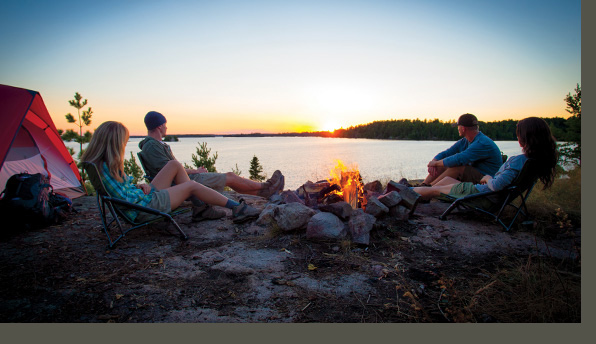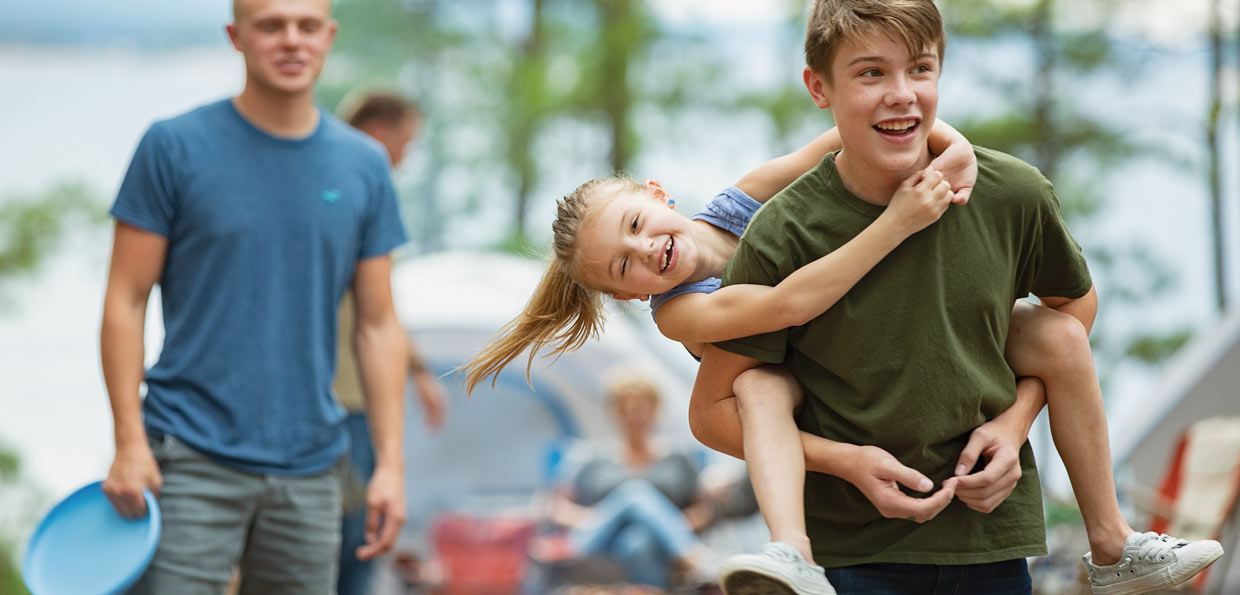CAMPING

Pitch the tent, crack a cold one and let the wilderness work its magic. Whether you are chasing sunsets or perfecting your campfire nachos, we've got the gear to keep you going. From rugged essentials to camp comforts, we are the ticket to outfitting your adventure.
Camping Etiquette
Respectful and Responsible Camping 101
When it comes to camping, be that person who is mindful of other campers and the environment. It’s important to honour camping etiquette in Canada.
7 Principles of Leave No Trace
Here are some helpful considerations for campers to ‘Leave No Trace’ while camping:
- Plan Ahead: Knowing where you are going to camp and preparing ahead will help minimize the impact on the land and help you be prepared in case of any emergencies.
- Camp on Durable Surfaces: An ideal camp is set up at least 60 meters away from the shorelines and on the existing campsites or trails. Stay on durable surfaces: bare ground, sand, dry grass and deep snow to avoid altering a campsite.
- DND the Nature: Don’t disturb the natural objects and leave them as they are in their original place. Respect the land, flora and fauna and avoid destroying any sites.
- Dispose of Waste Properly: Inspect thoroughly and clean up your campsite for trash, micro-waste or food scraps. Avoid damaging trees, spreading soiled water in large streams and leave the place looking better than when you arrived.
- Minimize Campfire Impacts: Your firepit is not a trashcan and avoid burning garbage in it. Always attend to your campfire and keep it small. Make sure you extinguish the fire completely and let the ashes cool down before leaving the area.
- Be Respectful: Avoid feeding or approaching wild animals and if driving, only pull over in designated areas. Minimize noise and respect quiet time. Always keep your pets quiet and on a leash/under control.
- Leave No Trace: Don't litter your space and ensure you pick up all the garbage before leaving your campsite.

It is important to check what you bring to the campsite. Parks Canada has unique rules to help protect different places. For a safe trip, look at the regulations before you leave for your big adventure.
Guide For Camping With Your Pets & Kids
Camping with kids and your pet means double the fun but double the planning. Although planning a family camping trip can be tedious, it is necessary. From choosing a campsite to prepping food, here are a few tips to keep in mind before you head out into nature:

4 Camping Knots to Know
Knot-tying is a valuable skill especially when you are in outdoors. From setting up your tent to performing first aid, knowing strong knots will prepare you for situations that may arise while camping or backpacking.
Here are four crucial knots to learn this camping season.
Happy Campers!
Gifts for Campers